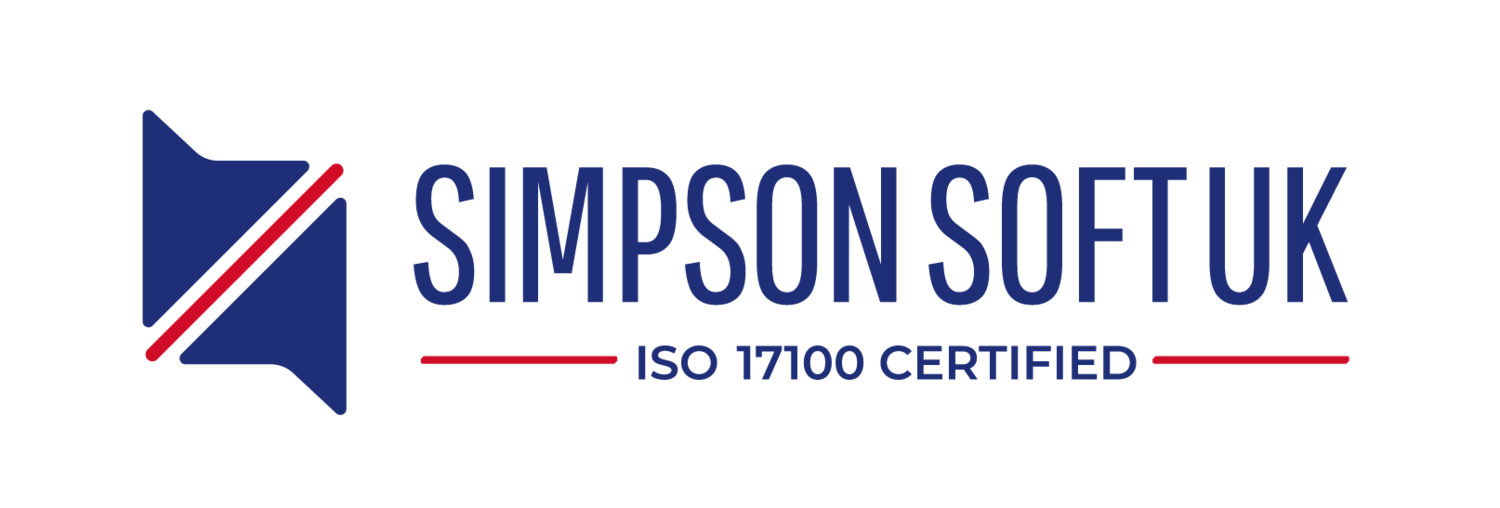Best CAT Tools in the Translation Industry
“The great growling engine of change – technology.”
Keeping up with that growling engine is what progress hinges on, and we are determined to stay a step ahead.
CAT tools have become popular in the translation industry and have been delivering time and cost efficiencies for businesses. Although the “fuzzies” and “matches” aren’t particularly friendly to our pocket, translators are expected to work with these tools, whether we like them or not.
“If we must do something, then we must do it well.”
- Anonymous
Let’s do it really well then! Linguists in the Simpson Soft team have decades of experience working with different CAT tools, so we wanted to give you an overview of the best CAT tools in the industry.
Benefits Of CAT Tools For Linguists
Before we get into which CAT tools might be best for you, here are some reasons why linguists benefit from CAT tools.
Productivity:
With a CAT tool, translators can focus on translating the segments that need it rather than wasting time typing, editing, and formatting content in a template. Your CAT tool can manage the rest and will even create a clean copy of your original file in the source language once you are done.
Consistency:
Thanks to the Translation Memory feature of CAT tools, translators can work on multiple texts with the same consistent results every time. CAT also seamlessly gets smarter as its translation memories expand the more you use it.
Good Quality:
Its in-built quality checker feature ensures that content produced is the best quality before publishing. CAT tools work by breaking the source text down into small segments and storing all the source and translated segments in a database, which can be retrieved later for quicker translation.
Having said that, there is a need to proceed with caution. You can read some of the considerations that you will have to keep in mind when using CAT tools in our recent blog:
Top 5 Features of CAT tools
Translation memory
A database that holds all of the translations you have already finished, from any translator. By allowing you to save and reuse all previously approved translations, translation memory improves translation consistency and saves you time.
Terminology management
It entails guaranteeing consistency in translation, identifying and extracting words, validating and updating the database, and enabling accurate and efficient translations with auto-suggest and auto-correct features.
Quality Assurance
The process entails assuring precise, reliable, and superior translations by utilizing techniques including terminology uniformity, translation memory management, linguistic quality assurance, and efficient teamwork.
Machine Translation
The automated translation of text using linguistic models and algorithms built into computer-aided translation software is referred to as "machine translation" in CAT tools.
Reporting and analytics
Interpreters possess the ability to provide extensive reports and evaluate crucial metrics for translation management systems, including word count, translation advancement, and project schedules.
Best CAT Tools In The Translation Industry
Here are some excellent CAT tools that linguists in Simpson Soft use and have stood the test of time.
SDL Trados
Trados Studio is a CAT tool with the goal of planning, revising, managing, and reviewing translation projects. SDL Trados uses translation memory for terminology management, much like any other CAT program. Multiterm, which you may use to create glossaries using termbases, is included with it. All translation units are saved in a database file that Trados Studio creates when it creates a new (file-based) translation memory.
Features:
Option to expedite your translation process by integrating machine translation technology.
AutoSuggest provides you with a selection of suggested words or phrases when you type a word's initial letters thus saving you time.
Quality assurance (QA) Features of that support productivity and consistency.
Option to work on the cloud and import previously completed Microsoft Word translations.
2. Across
With Across terminology database, the translation memory and the related project data are all centrally stored. The filter settings help with locating everything you're looking for because language data is kept alongside associated elements like the subject, relation, and project.
You can also choose the source texts, target languages, deadlines, and quality standards for each new project. Additionally, you can track each subtask's progress throughout the project. After a project is completed, billing and control can be based on a report that details the quality, repetition rates, and workload.
Features:
A fully functional translation environment with business features for independent contractors.
Support for common file types and almost all languages.
Connecting to different machine translation systems is quick and simple.
3. Alchemy Catalyst
Alchemy Catalyst is a visual localisation environment that facilitates and aids with every aspect of the localisation workflow. By speeding up the localisation process, businesses can expand into new markets before their rivals and generate more income. Moreover, Alchemy solutions are used by 80% of the biggest software companies in the world to lower expenses, improve revenue growth prospects, and expedite entry into foreign markets.
Features:
Creates a global presence through localisation.
A brand-new, highly visual translation environment.
It may directly manipulate attributes or utilise the mouse to place GUI elements with pixel accuracy.
4. Déjà vu
Déjà Vu is a tool for computer-assisted translation that has a separate user interface. It is the most compatible CAT tool available because of the new SDXLIFF, XLZ, and MQXLZ filters. In order to improve ergonomics and usability, the new interface has been meticulously created to include consistency with other popular programs and functionality with ease. It is quite simple for translators to become proficient with and costs less with a more straightforward design.
Features:
The option to expedite your translation process by integrating machine translation technology.
It quickly creates termbases to create glossaries that guarantee consistency and reduce dictionary time.
As you type, AutoWrite makes word suggestions from the terminology database to help you type faster.
5. MemoQ
Operating on Microsoft Windows operating systems, memoQ is a specialised suite of computer-assisted translation tools. With its sophisticated capabilities, it simplifies and accelerates translation procedures. The translation is saved automatically in the translation memory once you translate and verify a section. Then, as you go through your source text, memoQ identifies related sentences and provides you with an automatic translation by indicating how well the sentences match.
Features:
Using LiveDocs, you can include both bilingual files and monolingual reference resources.
Features that support productivity and consistency include quality assurance (QA) and real-time spell checking.
Strong analytic tools.
6. OmegaT
The CAT tool OmegaT is available as open-source software. It refers to itself as "the translation memory tool that is free." A translation task is managed by OmegaT as a project, which is a hierarchy of files with unique names. Documents that are not translated are copied by the user into a folder called /source/ (or its subfolders). The source documents are shown in the Editor pane as separate "segments" that can be translated one at a time.
Features:
Supports close to thirty file formats.
Brilliantly compatible with other CAT tools.
Integrated with Google Translate.
7. Wordfast
Wordfast is a multi-platform translation program that can be used independently. Your translations are kept in a translation memory database, from which it retrieves them for use in other projects. It is simple to use, quick to pick up, and has an intuitive UI. The translation can be put in a separate box on the right side of the source text, and each section is displayed in a specific box. In the market, the company presently has over 25,000 active client deployments.
Features:
When there are no translation memory matches, you can employ machine translations by integrating Wordfast Pro with numerous machine translation engines.
Filtering segments using terms, phrases, notes, and other properties is possible with Wordfast Pro.
A robust network of assistance and a helpline in case you run into issues.
8. Memsource (now called Phrase)
Memsource provides a cloud-based translation platform to its consumers. With its software, the company hopes to simplify and lower the cost of translation for enterprises. There are also choices for machine translation and more conventional computer-assisted translation tools. By adding machine translation (MT) and non-translatables (NT), Memsource post-editing analysis expands on the scope of typical translation memory analysis.
Features:
The cloud editor, which opens in a browser.
You can work offline with a desktop editor because it synchronises with the cloud in real-time.
A platform that is intuitive and has the potential to incorporate machine translation.
Work With the Best
Working with clients globally has given us the expertise to understand exactly what they need and deliver it seamlessly. Our resources are trained and experienced in using the latest technology to meet client expectations.
If you want to know more about how we do this, reach out to us, and have a chat with our experts.











